AMP 3 and AMP 5 for iBasso DX200
AMP 3 and AMP 5 for iBasso DX200 are some of the most interesting add-ons you can give a DAP as they give it a whole new sound with a lot to root for. We’ll explore what changes they bring to the sound of DX200 and which we recommend the best.
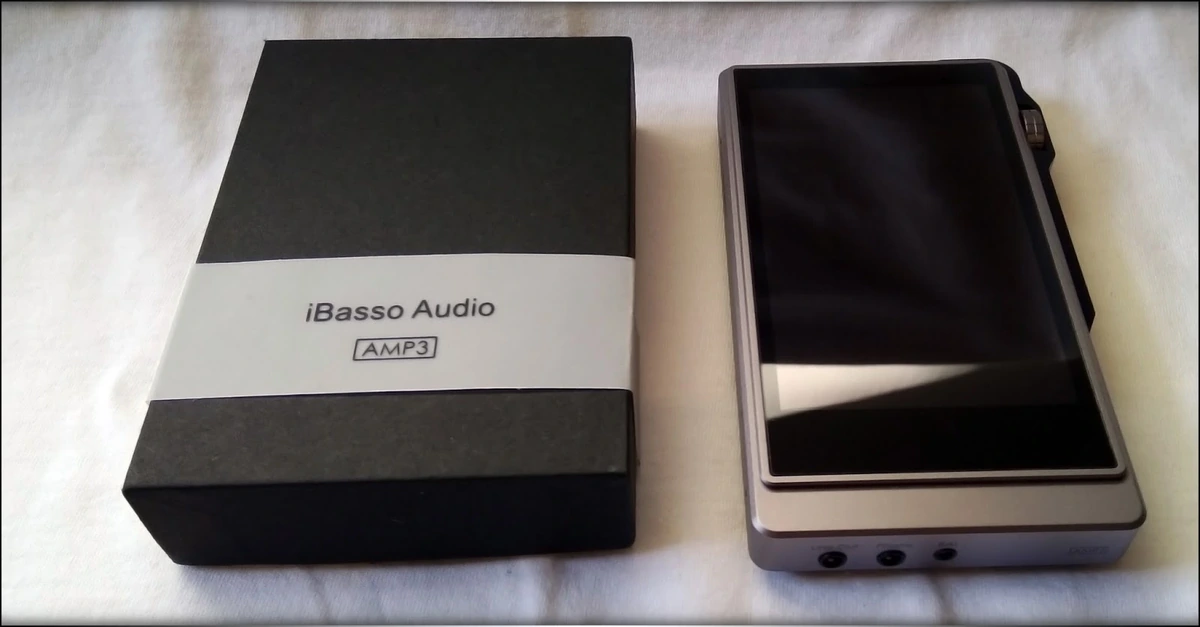
Introduction
I reviewed a few iBasso products already, and they are clearly one of my favorites company, with excellent customer support, excellent ethics and a very good overall quality for their products. iBasso is also the company behind the IEM that shocked the world, iBasso IT-01, which I reviewed before: https://audiophile-heaven.com/2018/02/ibasso-it01-love-for-music.html
It should be noted that I have absolutely no affiliation with iBasso, I am not receiving any incentive for this review or to sweeten things out. This review is not sponsored nor has been paid for by iBasso or anyone else. I’d like to thank iBasso for providing the sample for the review. The sample was provided along with iBasso’s request for an honest and unbiased review. This review will be as objective as it is humanly possible, and it reflects my personal experience with AMP 3 and AMP 5 modules. Every opinion expressed is mine and I stand by it, the purpose of this review is to help those interested in DX200 and its ulterior AMP modules find their favorite sonic flavor and to make the most out of DX200 and their music listening experience. There are no affiliate links in this review.
Product Link
You can get iBasso DAPs and other iBasso products from www.amazon.com here: https://www.amazon.com/s?k=iBasso
Packaging
First things first, let’s get the packaging out of the way:
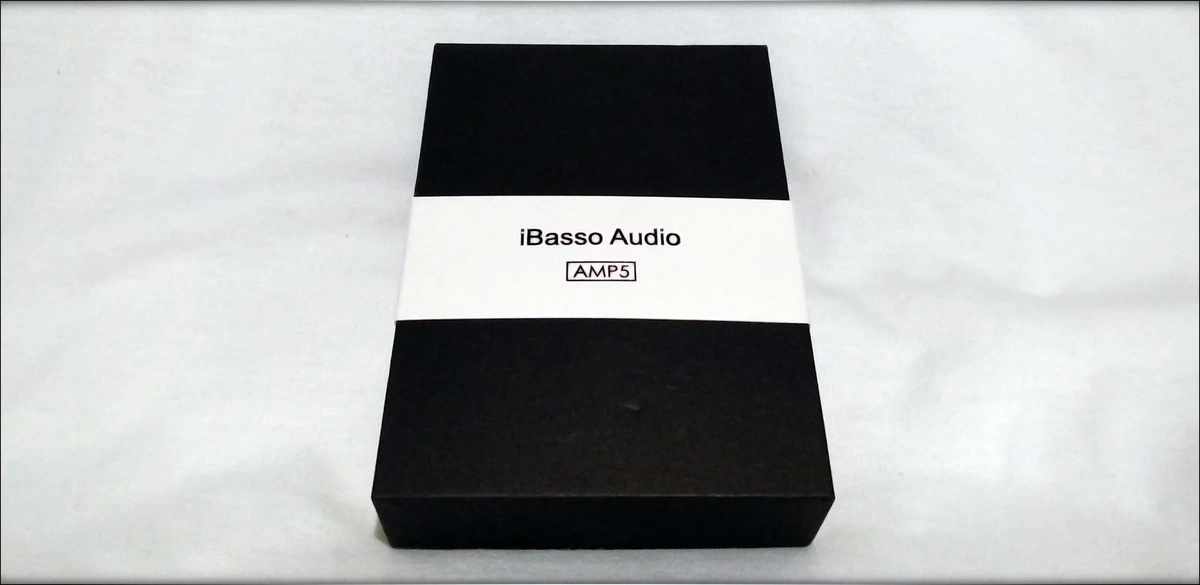
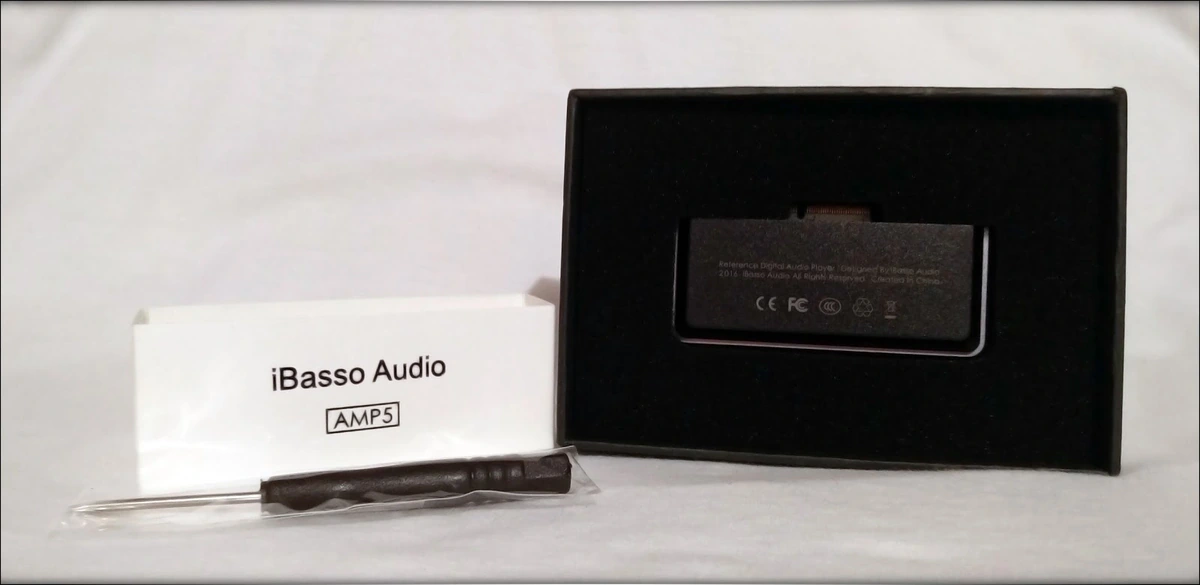
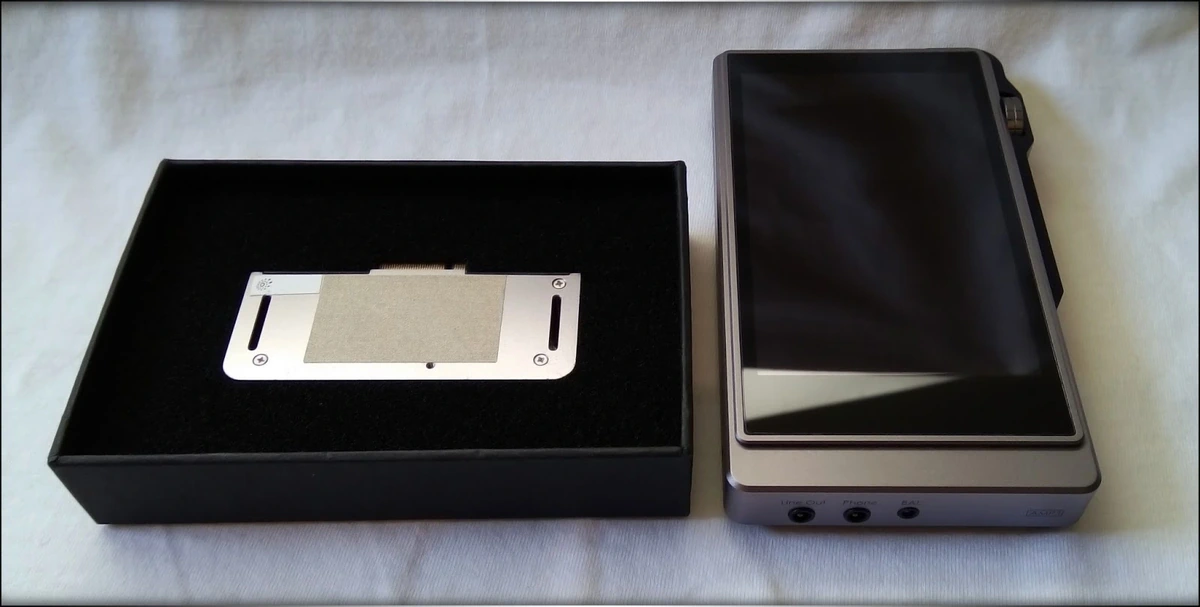
Each AMP module comes packaged in a small, rectangular cardboard box, and it is seated in a foam cutout, where the pin array is kept safe from any impediments. The box is hugged by a thin plastic layer which has the name of the AMP module written on it, but there is no more data written on any of the AMP modules.
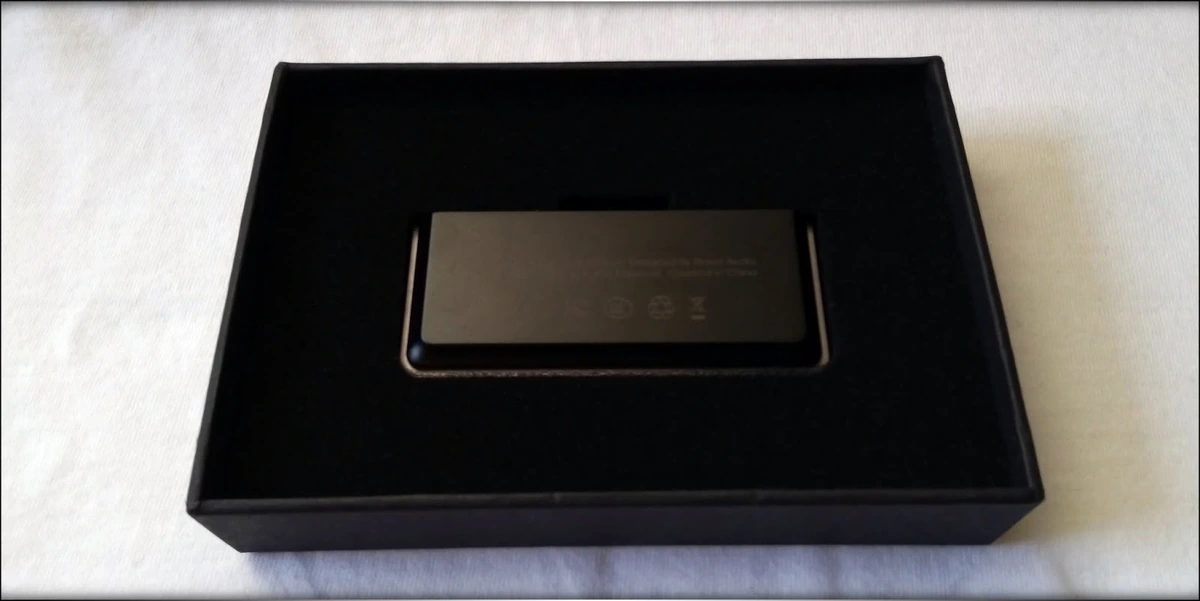
Each module comes packaged with a screwdriver, iBasso making sure that you will be able to mount and use the module without any hassle. There is a warranty book included with each module, but that comprises most of the package, iBasso making sure that the space in each package is used efficiently.
All in all, as those are just Amplifier modules for DX200, we are quite happy with the way they are packaged, and there isn’t any large issue we can spot with the packaging.
Build Quality/Aesthetics/UI/Firmware
Each AMP module is made to work with DX200, and the combination is usually flawless and there isn’t any type of issue. The body of the DAP combines perfectly with the body of the AMP, and iBasso seems to have taken great care in taking very small margins of error when it comes to their shape, size and color. Each AMP module did fit perfectly and their construction is as solid as the one of the original AM01 module which comes with DX200.

iBasso DX200 needs to be turned off while replacing an amp module. Not shutting it down while doing this can break it, and the AMP module might not be recognized.
Other than this, each module works and looks as intended, meaning that iBasso did a great job in both fitting the building process and the software process.
Sound Quality
It is important to note that we’ll mostly be comparing AMP 1 with AMP 3 and AMP 5. At the same time, it is essential to notice that AMP 3 is 2.5mm TRRS Balanced only, while AMP 5 is 3.5mm TRS Single Ended only, so cables and volume matching might induce a bit of error in the process, and not all IEMs and Headphones have the right cables to work with both modules.
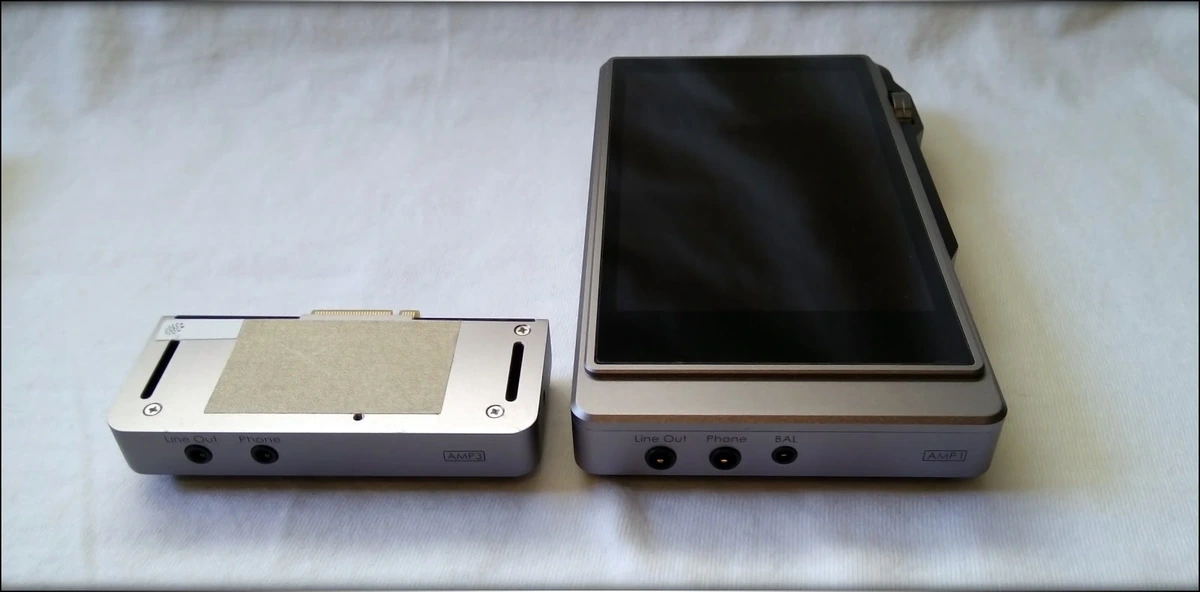
Bass
When it comes to bass, AMP 1 seems to be the most neutral one. All AMP cards have similar extension and all of them go well down to 20 Hz and can make any pair of IEMs of Headphones rumble, but AMP 5 has the most power of the 3, so it provides the best control for large, over-the-ear headphones, giving the most controlled and strongest bass for harder to drive loads, while AMP 3 might be a tad quicker, provided the right cables and that you don’t require more power than AMP 3 provides. In terms of bass response, both AMP 3 and AMP 5 seem to provide an ever so slightly warmer response than AMP 1, where AMP 1 seems to be the tightest, with the quest response, AMP 5 seems to be the most natural with the warmest response, and AMP 3 seems to be a good balance and to be in between. Bass resolution is amazing with all of them, but AMP 5 seems to provide the most realistic feeling, especially with large headphones.
With songs like Kinfe Party – Bonfire, the bass impact is best felt on AMP5, and the overall song feels to have the most dynamic force and with AMP 5, while it is the most vivid with AMP 3. AMP 1 feels most reference, providing probably the most raw detail, but providing a less exciting response than either of its brothers, and given that AM01 was already quite amazing, both AMP 3 and AMP 5 are already quite amazing. The soundstage feels most realistic on AMP 5, with AMP 3 maybe being a hair wider, but less deep.
Midrange
The midrange tonality and balance seems to be spot-on for all AMP modules from iBasso. It is quite hard to tell them apart, but AMP 5 tends to have a slightly warmer sound with a bit more sparkle in the treble, while AMP 3 tends to also have a slightly warmer sound with more sparkle in the treble compared to AMP 1, which feels to be the most reference module. The midrange itself tends to be a tad smoother on both AMP 3 AMP 5, being more musical and more captivation emotionally, while AMP 1 is the quickest, but at the same time the least engaging out of the 3. The smoothness of AMP 5 and AMP 3 is given by a smooth and musical general sound rather than a smooth treble, the whole sound is easier to listen to and more enjoyable, AMP 1 being the most reference of the 3, and standing to being the most precise of them, AMP 1 in balance to the other two AMP modules reminding a bit of ER4-XR from Etymotic, which was also plenty detailed and had a lot of resolution.
With songs line Lindsey Stirling – Anti-Gravity, the most emotional and engaging violin sound comes from AMP 5, which tends to also the be the most engaging overall, while AMP 3 tends to give her music the widest stage, with the most vivid sound, though AMP 5 tends to hold the upper hand in dynamics and general engagement. The general midrange tonality seems to be perfect on all, and violins have a natural sound, along with voices, for all 3 AMP modules.
Treble
The treble is usually where most differences are, but in this case, all 3 AMP modules have an excellent extension in the treble, and all 3 can play the highest registers with ease and with excellent detail. Of the 3, both AMP3 and AMP 5 tend to be more sparkly in their treble, while AMP 1 tends to be a bit more even and flatter throughout its response, and although it might come off as brighter with certain IEMs and Headphones, AMP 1 also tends to be a bit less sparkly and less engaging, maybe more reference when compared to its brothers. This doesn’t cancel any of the observation I made in my previous review of DX200 with AMP 1, just places AMP 3 and AMP 5 even higher than it, both of those being quite amazing in their response. AMP 3 seems to be the most vibrant in the treble, while AMP 5 tends to be a tad smoother even in the treble than AMP 3. None of the AMP modules doesn’t tend to have a grainy treble, and all of them tend to be very pleasing in their treble reproduction.
On songs like Zomboy – Game Time, all AMP modules render an excellent overall dynamic and detail for this song. AMP 5 tends to have a better bass impact than its brothers, while AMP 3 tends to be wider in its soundstage presentation. The general tonality balance is quite spot-on for all 3, and the general engagement seems to be the best with AMP 5.
Soundstage
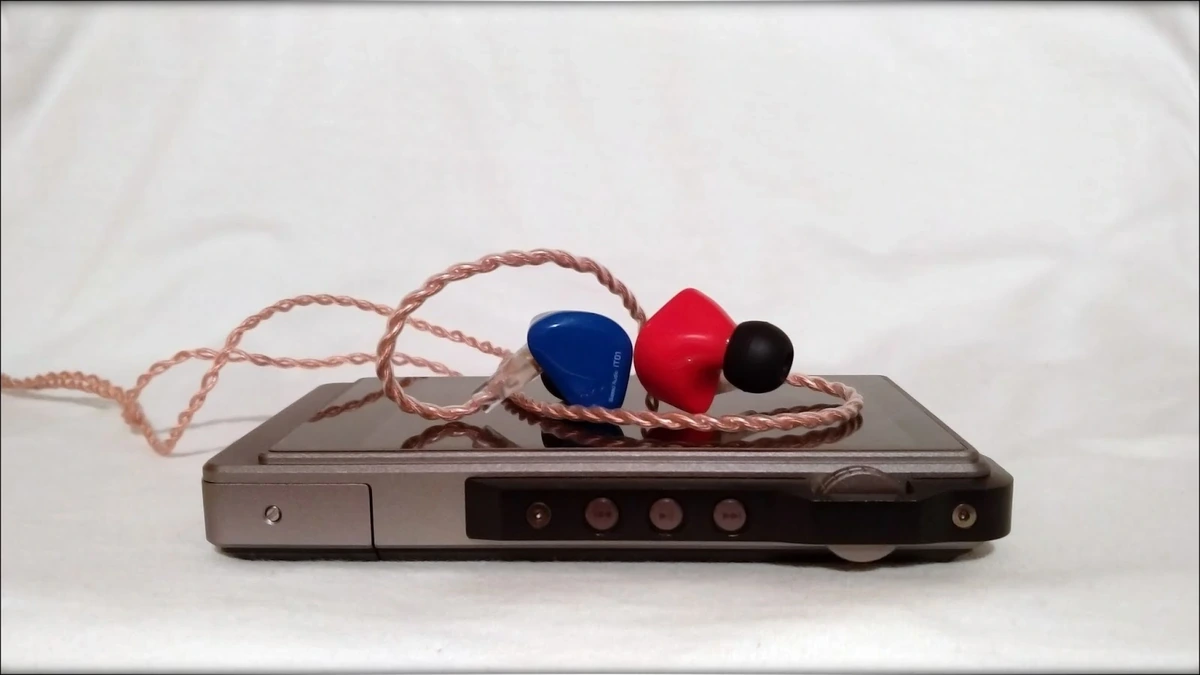
The soundstage is quite intriguing, as it was already pretty good and well-rounded on AMP 1. Starting with AMP 3, the soundstage got even wider than it was on AMP 1, without sacrificing the depth AMP 1 had. On the other hand, AMP 5 tends to add even more depth, to the improvement AMP 3 made, making the soundstage both wide and deep at the same time, and in the grander scheme of things, bigger in all directions than AMP 1, although AMP 1 was already quite amazing.
ADSR/PRaT
The ADSR / PRaT tends to be a bit different between the 3 modules. Starting with the AMP1, it could be called the most precise of the 3 AMP modules. It is the quickest, has the quickest overall impulse response, and can come as the most detailed. Fine textures and micro details are rendered with amazing precision, and it acts like a magnifying glass, providing excellent introspection in the details of a song.
AMP 3 tends to be a bit more relaxed than AMP 1, so the music tends to be a bit smoother, musical notes having a slightly different presentation, with a slightly more musical tendency, and a slightly more enthusiastic approach. This makes AMP 3 also sound a tad more dynamic and more engaging than AMP 1, but both are plenty musical and plenty dynamic, AMP 3 is just a tad better.
AMP 5 takes things one step ahead, making things even smoother and effortless, providing a good introspection into details and micro-details, as well as fine textures, but eventually feeling a tad musical in comparison.
It is important to note that the differences are not day and night, but with a lot of listening they can become more evident.
Portable Usage
The portable usage scenario of the AMP modules is similar to that of iBasso DX200, but the total battery life of DX200 might vary a bit depending on which AMP module is installed. There some battery life reduction with AMP 5, but it is a bit hard to tell exactly what the runtime is with each, as the testing with mixed usage scenarios indicates that AMP 5 takes away one to two hours of battery life, but it is hard to tell if with a specific usage scenario it will bear different results. Since AMP5 is a bit louder than AMP 1, and since it has a bit more power, it might also be kept at a lower total volume, so it might result in less battery life lost with specific usage scenarios.
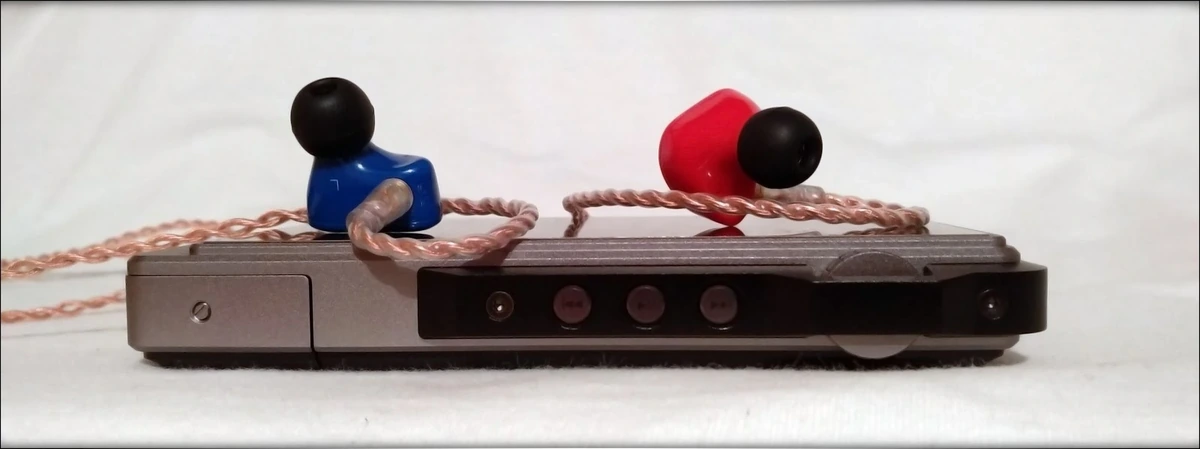
For AMP 3, it should be noted that it only has 2.5mm Balanced outputs, so unless using and having spare Balanced cables, AMP 3 can be considered slightly less portable than AMP 5 and AMP 1. It should also be noted that 2.5mm plugs are generally less reliable than 3.5mm plugs, leading to more issues with plugs breaking in 2.5mm balanced ports. This is actually solved by iBasso with the release of their AMP 4 module, which sports a 4.4mm Balanced cable, which will be better than AMP 3 in reliability. A broken 2.5mm plug won’t damage the AMP module, but it would be best for AMP 3 to not be placed in a pocket with other objects that might place strain on the plug, while AMP 5 doesn’t have such issues, relying on a 3.5mm connector.
AMP 4 is also supposed to spot a very good sound, and we’re looking forward to writing about it in the near future.
Comparisons
The biggest rivals here are AM03A and AM05 from FiiO, to be compared against AMP5 from iBasso DX200, and how will this change the overall impression of DX200 vs FiiO X7mkii.
Starting with DX200 + AMP5 vs X7mkii + AM05, Here, the score is very close and both have a very very similar tuning. Both offer excellent amounts of power, being able to power Audeze LCD-MX4, and Beyerdynamic Amiron, and both are quite able in reproducing an effortless, smooth and musical sound, with a lot of dynamics and an excellent overall engagement. AMP 5 from iBasso might be a hair more revealing than AM05 from FiiO, but the difference is quite minimal and should be taken with a grain of salt, both being excellent options for powering demanding headphones. Both work very well with IEMs, and it is hard to notice any hiss with either, so both have a golden rating. Adding AMP5 to DX200 and facing it against X7mkii, if X7mkii is still sporting its AM03A makes DX200 more engaging and more vivid, and gives it a larger lead in detail and revealing abilities, but after X7mkii is paired with its AM05, the things are more even, making X7mkii hold its ground. While extremely complicated to determine a clear winner, AMP 5 with DX200 might be a hair better, but again, the differences are not big here.
When it comes to iBasso DX200 w AMP 3 vs X7mkii with AM03A, the two are very similar in presentation, signature, tonal balance, dynamics and power, but DX200 with AMP 3 has a bit more detail, although the difference isn’t night and day.
Compared to Opus #2, DX200 + AMP 5 is similarly organic in nature, but it is more revealing and has more driving power, along with a more vivid and effortless sound, especially with harder to drive headphones.
Value and Conclusion
Both AMP modules for DX200 will cost you around two hundred dollars, and in all honesty, while they aren’t exactly cheap, especially compared to FiiO’s AMP modules, for example, depending if you have more balanced cables or Single Ended cables, both modules are quite lovely. It is hard to even imagine picking just one, but it really comes down to one’s needs and sonic preferences. The value surely is there and while neither doesn’t recreate DX200 and doesn’t transform it into an entirely other DAP, both can make it more enjoyable, and both can improve your experience for a part of its cost. If you already found happiness with DX200 and if you already have a pair of higher end headphones or IEMs you really love, then picking either of those AMP modules can squeeze even more performance from an already amazing and lovely product.
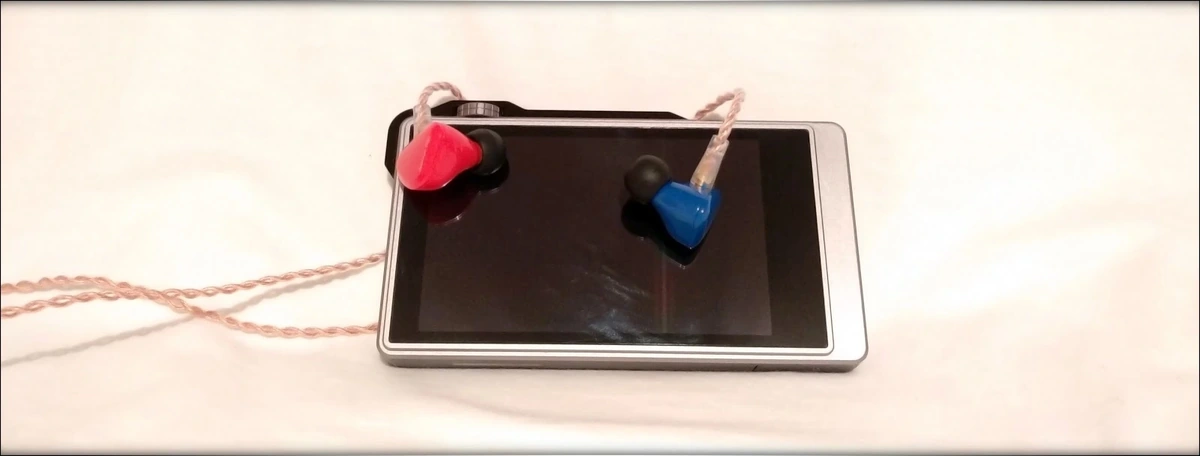
Of course, you could also add an external AMP do DX200, but then you’d have a larger stack to carry, and most AMPs that would perform as either AMP5 or AMP3 do, would be much more expensive, so iBasso did manage to create not only an excellent one-device solution with DX200, but also managed to keep the costs lower than every other standalone Amplifier option with similar performance.
At the end of the day, both AMP modules are quite amazing and both provide an excellent addition to an already excellent flagship, neither isn’t quite that expensive, and both have a great deal going on for them. If you’re looking for a way to make the amazing DX200 even better, you should really have all its AMP modules in sight as they can make the situation much more interesting.
Product Link
You can get iBasso DAPs and other iBasso products from www.amazon.com here: https://www.amazon.com/s?k=iBasso
--- Please remember to stay safe, and always have fun while listening to music!---
- If you have a dime to spare, please donate, and help us! It would make the day brighter for me and my wife-
Full Playlist used for this review
We listened to more songs than those named in this playlist, but those are excellent for identifying a sonic signature. I recommend trying most of the songs from this playlist, especially if you’re searching for new music! The playlists are different for Spotify, Tidal and Youtube, and based on the songs I enjoy and are available on each!
https://www.youtube.com/playlist?list=PL_cjBXGmwSHSdGcwuc_bKbBDGHL4QvYBu
https://open.spotify.com/playlist/5J3oloz8Riy9LxEGenOjQ0?si=979ba4f082414be7
https://tidal.com/browse/playlist/330fd544-8e5b-4839-bd35-676b2edbb3d5
--- Contact Us ---






I have a FiiO X7ii/AM3A and am really tempted to get the Dx200 with an AMP5. Would it be worth it, or should I just get an AM5 for the FiiO?
Hi Darren. Both getting the AM5 for X7mkii and getting DX200 + AMP5 for it would sound pretty great! Kindly take a look at the features of each DAP as well, each has its own advantages and features you may need or be looking for!